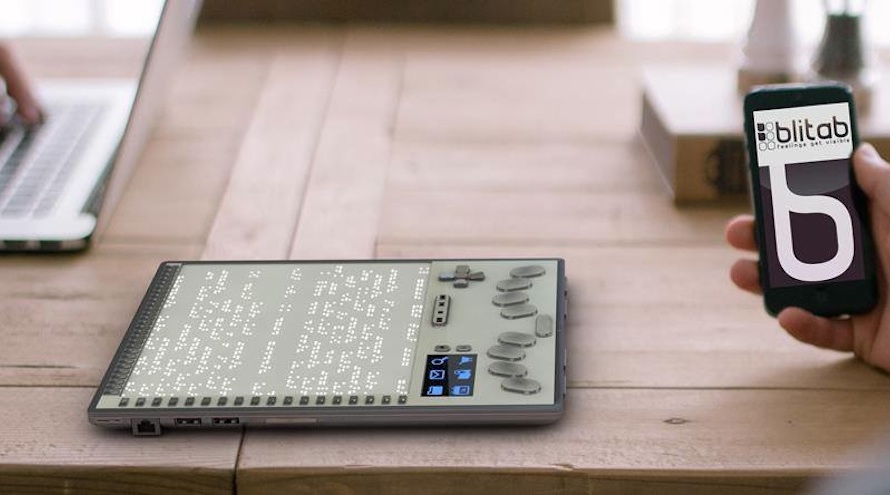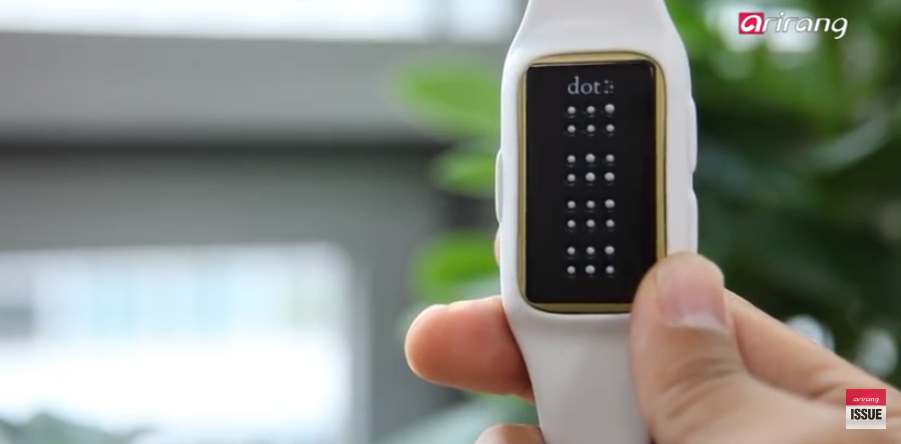Discover Innovative Tools Created for the Aesthetically Damaged
The advancement of cutting-edge tools for the visually damaged stands for a considerable improvement in accessibility and self-reliance. Technologies such as smart glasses with AI capacities and mobile applications made to offer auditory summaries are reshaping everyday experiences for individuals.
Smart Glasses for Navigation

Smart glasses developed for navigating are revolutionizing the way visually impaired people communicate with their atmosphere. These advanced tools use a combination of video camera innovation, man-made knowledge, and auditory comments to give real-time info concerning surroundings. By employing challenge detection systems, smart glasses can inform users to possible hazards, enabling much safer flexibility in both familiar and unknown setups.
The assimilation of GPS modern technology even more enhances navigating capacities, enabling individuals to get auditory directions as they move. This hands-free method not just fosters self-reliance but also equips aesthetically impaired individuals to browse urban landscapes with boosted confidence. Furthermore, several clever glasses are outfitted with attributes that recognize landmarks and road indicators, giving contextual information that boosts the individual experience.
Additionally, the advancement of these devices is continuously advancing, with firms functioning to improve the accuracy of object recognition and increase the variety of navigational attributes. As smart glasses end up being more economical and easily accessible, they hold the possible to dramatically transform day-to-day live for aesthetically impaired individuals. Ultimately, these ingenious tools represent an essential action toward inclusivity, offering enhanced wheelchair and a better sense of autonomy for people navigating the globe around them.

Mobile Application for Daily Living
Exactly how can mobile applications enhance the day-to-days live of visually damaged individuals? Mobile apps are changing the method aesthetically damaged individuals navigate their atmospheres, handle daily tasks, and accessibility information. These applications give important assistance via different performances, fostering freedom and boosting top quality of life.
A number of ingenious mobile apps are made particularly for everyday living. For instance, applications like Be My Eyes link visually damaged individuals with sighted volunteers by means of video calls, permitting them to receive real-time support with tasks such as checking out labels or navigating unknown areas. Seeing AI, developed by Microsoft, makes use of fabricated knowledge to explain environments, checked out text, and recognize items, efficiently changing a smart device right into an effective tool for daily aid.
In addition, navigation applications customized for the visually damaged, such as Aira and BlindSquare, use audio-based instructions and environmental details, making it possible for individuals to traverse their environments safely and with confidence. Beyond navigation and immediate assistance, mobile applications additionally sustain company and job monitoring, with attributes that assist users set reminders, create to-do listings, and track visits. In summary, mobile applications work as indispensable sources, empowering aesthetically impaired people to lead even more independent and satisfying lives.
Wearable Technologies for Assistance
Empowerment with innovation is increasingly apparent in the world of wearable gadgets developed to aid visually damaged individuals. These innovative devices incorporate seamlessly into life, boosting navigation and providing vital feedback to customers. Clever glasses furnished with electronic cameras can identify faces and read text aloud, enabling users to interact more confidently in social and specialist setups.
Another notable innovation is making use of haptic comments systems in wearable tools. These systems make use of resonances or other responsive signals to eye associates convey info about the individual's atmosphere, such as barriers or changes in surface, improving wheelchair and safety and security. Wearable modern technologies additionally include wristbands that connect to mobile phones, informing users to notifications with subtle resonances, hence enhancing connectivity without reliance on aesthetic hints.
As these technologies remain to progress, they are not only enhancing independence for aesthetically damaged individuals but additionally cultivating a better sense of incorporation in culture. By bridging the gap in between difficulties dealt with in everyday living and the capacity for autonomy, wearable modern technologies serve as crucial devices in the quest for equality and empowerment for those with aesthetic impairments.
Sound Summary Devices
Audio summary tools play an essential role in enhancing ease of access for visually damaged people, giving them with the capacity to involve with aesthetic media. AI-powered visual aids. These devices use narrated summaries of vital aesthetic aspects in films, television shows, and live performances, ensuring that customers can totally understand the context and emotions shared with visuals
Audio description can be integrated into numerous platforms, consisting of streaming solutions, cinema screenings, and live theater. Many preferred streaming solutions currently include audio summary as an availability function, allowing viewers to select it easily. In addition to mainstream media, specialized applications also exist, supplying audio descriptions for art you can try these out events, museums, and other social events.
The effectiveness of audio description depends upon the skill of the narrators, who must share visual details succinctly without detracting from the initial audio. Technologies in this field are likewise leading the way for even more individualized experiences, where customers can readjust the degree of information and pacing according to their choices.
Braille Innovations and Devices
Braille innovations and tools have dramatically changed the means aesthetically damaged people connect with text and details. Modern innovations have actually led to the development of versatile devices that improve literacy and freedom amongst individuals. Significantly, Braille present technologies have actually progressed, permitting dynamic analysis experiences. These devices transform digital text right into Braille, enabling users to access a huge variety of details on smart devices, computers, and tablet computers.
Additionally, mobile Braille notetakers combine standard Braille input with modern functionalities, facilitating note-taking, scheduling, and record modifying on the go. Screen readers for the blind. These small tools typically include text-to-speech capacities, linking the space between Braille and auditory details
On top of that, cutting-edge Braille printers have arised, allowing users to generate Braille YOURURL.com labels, documents, and instructional materials successfully. This accessibility cultivates higher participation in instructional and specialist settings, eventually advertising inclusivity.
In addition, research study into smart Braille innovations proceeds to broaden. Gadgets that incorporate expert system are being explored to supply real-time navigating support and contextual info, improving the individual experience in varied settings. On the whole, these technologies show a commitment to encouraging aesthetically impaired individuals with technology, guaranteeing they can easily gain access to and engage with the world around them.

Verdict
The advancement of ingenious tools for the aesthetically damaged dramatically improves independence and quality of life. These modern technologies not just foster higher inclusion yet likewise advertise autonomy in day-to-day activities, eventually contributing to a more easily accessible and equitable culture for aesthetically impaired individuals.
As wise glasses come to be a lot more accessible and inexpensive, they hold the prospective to substantially change everyday life for visually damaged individuals. Mobile applications are reinventing the way visually damaged customers navigate their atmospheres, handle day-to-day jobs, and access info. Apps like Be My Eyes connect visually impaired users with sighted volunteers through video telephone calls, permitting them to obtain real-time assistance with jobs such as reviewing labels or browsing unknown spaces.Additionally, navigation applications customized for the visually impaired, such as Aira and BlindSquare, use audio-based instructions and environmental information, making it possible for users to traverse their surroundings safely and with confidence.The advancement of ingenious tools for the visually impaired significantly improves self-reliance and quality of life.